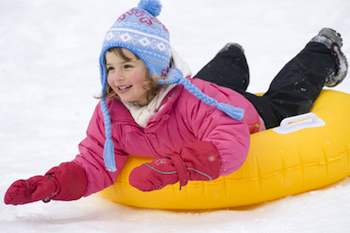- MENU
- HOME
- SEARCH
- WORLD
- MAIN
- AFRICA
- ASIA
- BALKANS
- EUROPE
- LATIN AMERICA
- MIDDLE EAST
- United Kingdom
- United States
- Argentina
- Australia
- Austria
- Benelux
- Brazil
- Canada
- China
- France
- Germany
- Greece
- Hungary
- India
- Indonesia
- Ireland
- Israel
- Italy
- Japan
- Korea
- Mexico
- New Zealand
- Pakistan
- Philippines
- Poland
- Russia
- South Africa
- Spain
- Taiwan
- Turkey
- USA
- BUSINESS
- WEALTH
- STOCKS
- TECH
- HEALTH
- LIFESTYLE
- ENTERTAINMENT
- SPORTS
- RSS
- iHaveNet.com: Health
Sue Hubbard, M.D.

One study indicated injuries are more common when snow tubes, discs, or toboggans are used than with traditional sleds that have a steering mechanism
As winter deepens and snowstorms sweep across much of the country, there may be several more "snow days" with children (and sometimes their parents) home from school.
I have fond memories of growing up in Washington, D.C., and idyllic "snow days" spent outside with our
The ride down was glorious, though trek back up seemed endless. We could spend hours out there, only coming in long enough to change out of wet gloves and grab a hot chocolate. Most of the time, there was very little adult supervision, and thankfully there were no major injuries that I recall.
With those memories in mind, I decided to do a little research on sledding safety and accidents. An article in the
Children ages 10 to 14 were in involved in 42.5 percent of sledding-related injuries, and boys represented about 60 percent of all cases. Wow!
Sleds can reach speeds of up to 20-25 mph and head trauma is one of the biggest concerns. The study reported that the head is the most commonly injured body part (I feel lucky I survived all those sled races) and that injuries to the head are twice as likely to follow a collision. Children age 4 and younger were four times more likely to sustain a head injury than older riders.
Other injuries reported from sled-related accidents included fractures, contusions and abrasions. In this study, about 4 percent of cases required hospitalization, and of this number, nearly half were due to fractures, while about a fourth were due to traumatic brain injuries.
Injuries were more common when toboggans, snow tubes or discs were used than with traditional sleds that have a steering mechanism. Many injuries occurred due to the fact that the sled was being pulled by a motorized vehicle, which resulted in more collisions.
The advent of helmets has helped prevent injuries from biking, and helmets are now recommended for sledding, skiing and snowboarding. A report from the
To ensure your children's safety while sledding, make sure there is adult supervision at all times. Sledding on streets should be discouraged and no one should ever sled where a hill meets a pond which may not yet be frozen. Sledding slopes should be free of trees and other obstacles, to avoid collisions. Children should sit up and face forward, and never sled head first.
With 49 of 50 states currently reporting snow "somewhere" on the ground, make sledding safety a priority.
Dr. Sue Hubbard is a nationally known pediatrician and co-host of "The Kid's Doctor" radio show.
Available at Amazon.com:
Copyright © KIDSDR.COM DISTRIBUTED BY TRIBUNE MEDIA SERVICES, INC.
AGING | ALTERNATIVE | AILMENTS | DRUGS | FITNESS | GENETICS | CHILDREN'S | MEN'S | WOMEN'S
Health - Make Sledding Safety a Priority